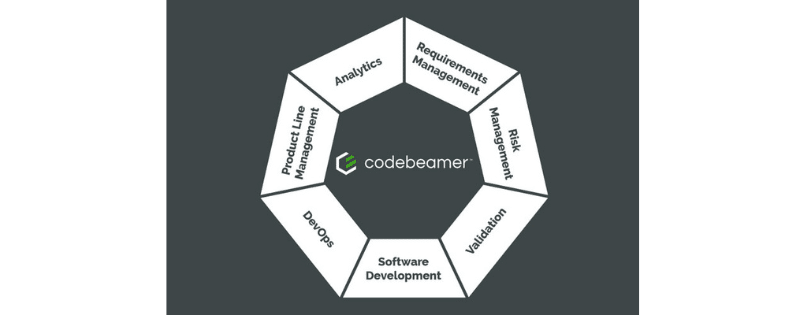More and more companies realize that increasing the efficiency of their software development processes is pivotal if they don’t want to be left behind. Product development and manufacturing best practices extend far beyond engineering, design, and the factory floor. Mature development teams reach their goals with help from Application Lifecycle Management (ALM) tools. An ALM solution is a long-term investment that pays dividends, and finding the tool that fits your purposes is crucial.
Key factors to consider when evaluating ALM software
Agile support
If you currently rely on a Waterfall or V-model process, you might want to follow the example of thousands of companies and switch to the Agile methodology. Development teams adopting the Agile methodology see major benefits in terms of efficiency gained, time to market, product quality, and more. Even if you still have doubts about this methodology, Agile provides a path to stay ahead of the curve. With adequate quality assurance processes, manage and reduce risk to an acceptable level, enabling Agile to be used in the development of safety-critical end products for industries like medical device, automotive, and aerospace.
Your chosen ALM platform should have a built-in Agile layer, even if you plan to stick to Waterfall for now. Some companies choose to gradually adopt Agile by first transitioning to a Hybrid methodology, with some elements of Agile slowly implemented in an otherwise Waterfall process.
Out-of-the-box support for various work items
End-to-end lifecycle management includes the management of requirements, software development and project management, quality assurance testing, and documents. Additionally, include demand management and IT Operations (or DevOps), if desired. Your ALM solution should have the adequate work items preconfigured: requirements and user stories, development tasks, test cases, and bugs, as well as the ability to store and manage documents and preferably demands. This way, the development process (SDLC) will be mapped and supported by relevant artifacts at each stage of the lifecycle. All changes to these work items should be logged, and links established between them to provide end-to-end traceability.
Customizable, highly configurable architecture
While preconfigured work items are essential, it is imperative that the entire ALM solution can be customized to perfectly suit your development teams’ needs. Tailor the right ALM platform to your internal processes with configurable work items, fully customizable workflows, flexible reporting options, and custom project analysis data.
Think about what information you’d like your artifacts to store. If your ALM solution allows you to add custom data fields, tailor your platform to your needs and have your works items configured. Organizations should be able to drive work items through a custom workflow that matches internal processes. Are end products are under government regulation by FDA, ISO, IEC, or other regulatory standards? Permission-based access, process enforcement, and approval processes with some form of validation (ideally, e-signatures) are also important features to have.
Integration points
Implementing a new ALM solution doesn’t throwing out all tried and tested single-point tools. You may want to keep some of them and integrate them with the new platform. In addition to tailoring the ALM to your internal processes, integrate it into your pre-existing toolchain. Advanced ALM suites offer integration points with various tools and file formats, such as IBM Rational DOORS (ReqIF), Atlassian JIRA, Microsoft Office, and more. Look for a platform that offers open APIs to let you create your own integrations.
One important consideration is the integration with Microsoft Office. Despite their limited functionality, MS Office files still appear in all industries for purposes like requirements management. You must work with clients or partners that use these documents due to their wide usage. One useful feature to have is the round-tip export-import functionality, which, lets you export data to MS Office documents, make changes, then reimport those changes to have them all merged with data stored in your ALM. This helps ensure data consistency across teams and software tools.

Codebeamer ALM is the leading solution due to its ease of use and flexibility. Codebeamer offers solutions such as:
- Scalable Agile development
- Continuous software integration and deployment
- Achieving software-driven innovation
- Risk management and maintaining regulatory compliance with auditable reporting
At their core, ALM solutions solve the challenge of requirements management across digital and physical realms. Thanks to thoughtful design such as pre-defined templates for common activities, Codebeamer makes requirements management user-friendly.
If your organization is evaluating ALM solutions, talk to 3 HTi. Our technical staff evaluates your specific needs and deploys a custom environment to meet your PLM and ALM needs.

